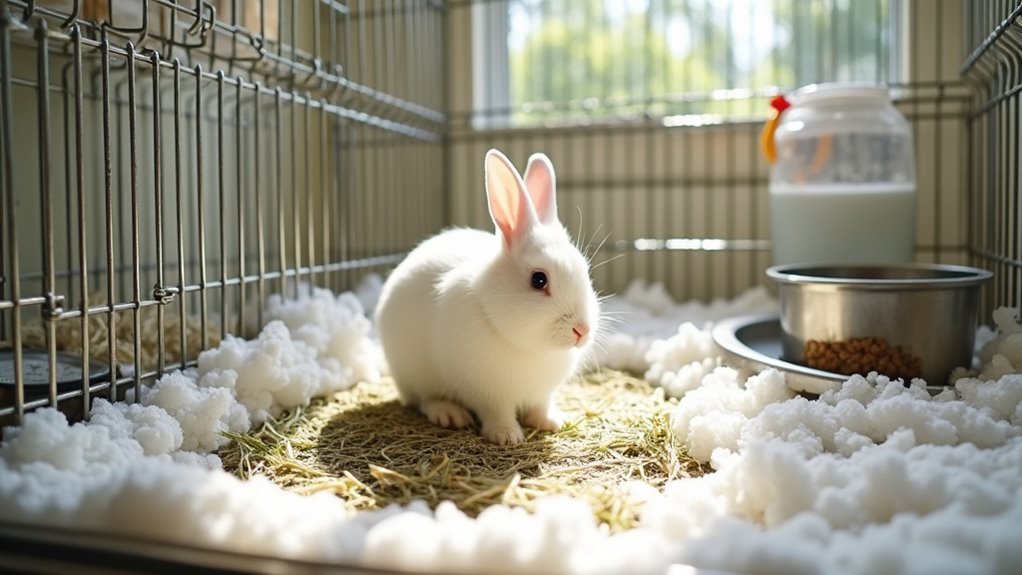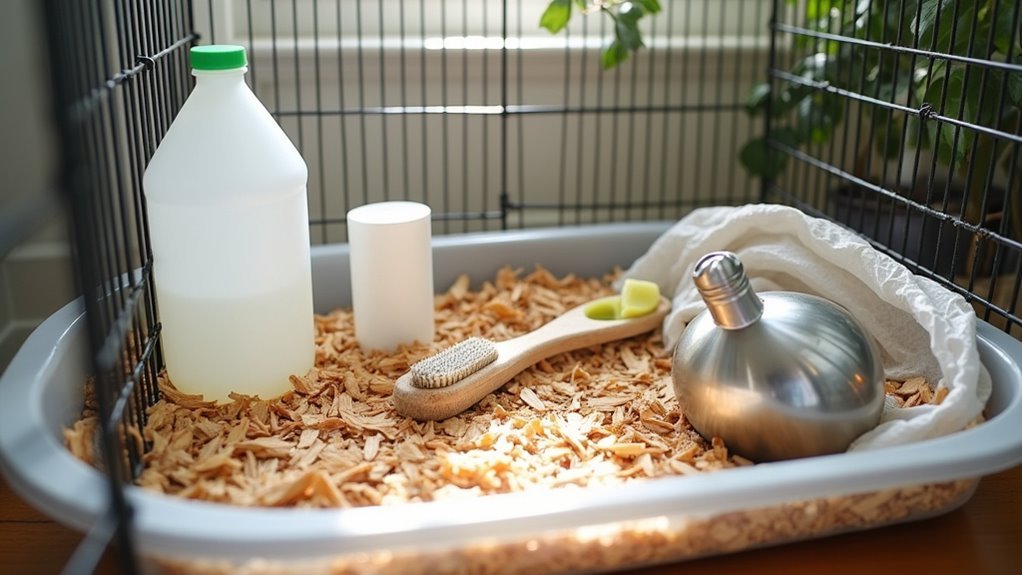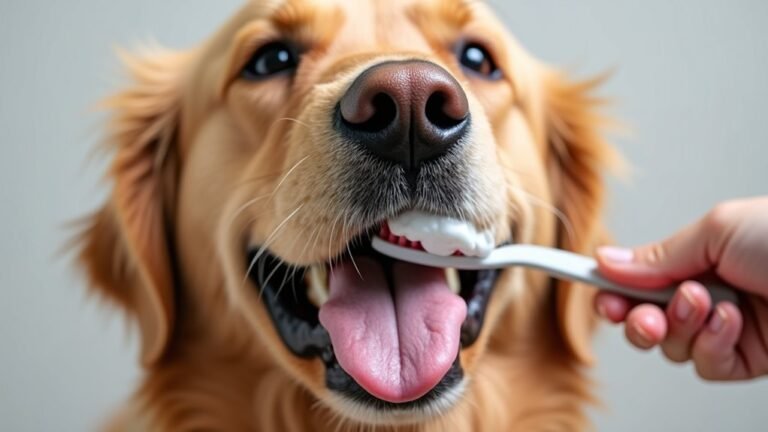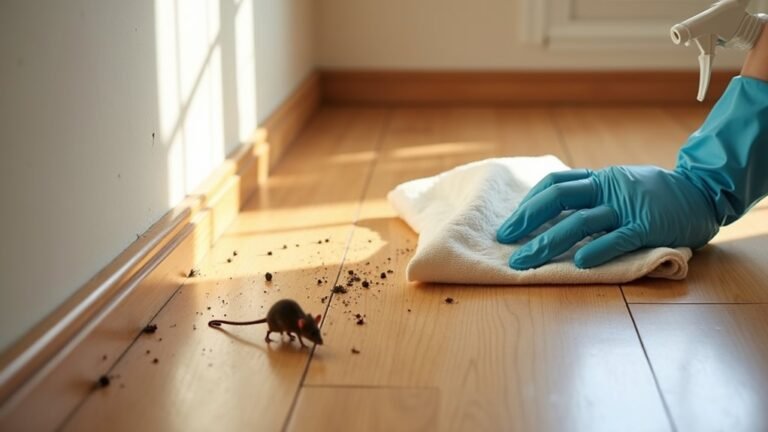Keeping your bunny’s cage clean is one of the most important parts of having a pet rabbit. A clean cage helps prevent sickness and bad smells while letting you check on your pet’s health. According to the House Rabbit Society, “A clean habitat is essential for a rabbit’s well-being, as rabbits are naturally clean animals that can become stressed in dirty environments.” Rabbits can make their homes messy pretty quickly, so staying on top of cage cleaning is key. By making cage cleaning part of your regular routine, you can keep your bunny happy, healthy, and comfortable in their home.
Healthy Bunnies, Happy Homes

Why do bunny owners sometimes struggle to maintain a clean cage? I think it’s often about time constraints and perhaps not fully understanding the health implications.
We’ve seen that regular cleaning prevents serious issues like snuffles and sore hocks. A clean cage also contributes to a fresh-smelling home, which is beneficial for both bunnies and their owners. Clean cages actually reduce anxiety in our furry friends. They’re happier when their space is tidy—especially with a proper litter tray for those designated bathroom breaks!
##
We’ll now look at the essential things to do and avoid when cleaning your bunny’s home.
Perhaps the most important part of bunny care is maintaining a clean, safe environment that protects their sensitive respiratory systems and delicate feet. Regular cleaning is essential for water quality and preventing potential health issues for your bunny.
Let’s break down the steps you’ll need to follow and some final thoughts to keep in mind for your fuzzy friend’s well-being.
Things to Do When Cleaning a Bunny Cage
Maintaining proper hygiene in your rabbit’s living space is essential for their health and wellbeing.
A clean bunny cage prevents illness, reduces odors, and creates a comfortable environment for your pet.
When cleaning your rabbit’s cage, it’s important to follow a thorough approach that addresses daily maintenance, weekly deep cleaning, and spot treatments as needed.
- Remove fresh foods daily: Take out any uneaten vegetables or fruits twice daily (morning and evening) to prevent spoilage and bacteria growth.
- Spot-clean messes immediately: Address small spills, urine spots outside the litter box, or soiled bedding daily, replacing with fresh materials to maintain hygiene.
- Deep clean weekly: Scrub the entire cage with hot water and dish soap using a nylon brush to remove buildup, paying special attention to corners and crevices.
- Disinfect thoroughly: Apply a 1:10 bleach-to-water solution, allowing it to soak for 30 minutes before rinsing completely to eliminate pathogens.
- Use vinegar for urine deposits: Spray a vinegar solution on calcium-rich urine spots, letting it dissolve for 10-20 minutes before cleaning to break down stubborn residue.
- Dry completely: Allow the cage to air dry in sunlight for several days when possible to kill remaining bacteria and make sure it’s completely dry before reintroducing your rabbit.
Things to Avoid When Cleaning a Bunny Cage
Cleaning a rabbit’s cage requires careful consideration of both the materials used and the methods employed to guarantee your bunny’s health and safety.
A clean habitat promotes your pet’s wellbeing, but using improper cleaning agents or techniques can inadvertently harm your rabbit or damage their home.
- Bleach: Avoid using bleach on rabbit cages, particularly those with galvanized metal components, as it can leave residue that causes rust and compromises the cage’s structural integrity.
- Unsealed wooden surfaces: Don’t apply disinfectant cleaners to unsealed wooden parts of cages, as the wood absorbs chemicals making proper disinfection impossible and potentially exposing your rabbit to harmful substances.
- Metal bristle brushes: These can scratch galvanized metal surfaces, creating vulnerable spots where rust can develop and eventually weaken the cage.
- Cleaning residue: Always rinse thoroughly after cleaning, as any leftover cleaning agents can irritate your rabbit’s sensitive skin and potentially lead to painful conditions like sore hocks.
- Toxic chemicals: Harsh cleaning products containing ammonia or other toxic ingredients pose serious health risks to rabbits, including respiratory issues, so opt for rabbit-safe alternatives like diluted vinegar solutions.
Steps
Maintaining a clean habitat for your rabbit is essential for their health and wellbeing.
A thorough cleaning not only prevents odors but also helps you monitor your pet’s health by observing changes in their waste patterns.
Regular cage cleaning reduces the risk of respiratory issues and skin infections that can develop when rabbits live in unsanitary conditions.
Follow these thorough steps to make sure your bunny’s home remains fresh and hygienic.
Step 1: Remove your rabbit and all accessories from the cage, placing your pet in a secure temporary location while you clean.
Step 2: Dispose of soiled bedding and clear out any waste material from all areas of the cage.
Step 3: Mix a cleaning solution of hot water, white vinegar, and mild dish soap in a bucket.
Step 4: Scrub all cage surfaces thoroughly with a nylon bristle brush, paying special attention to corners and seams where urine can accumulate.
Step 5: Prepare a disinfectant solution of 1 part bleach to 10 parts water for sanitizing the cage.
Step 6: Apply the bleach solution to all surfaces and allow it to sit for 30 minutes to kill bacteria.
Step 7: Rinse the cage completely with clean water to remove all cleaning and disinfecting residues.
Step 8: Place the cage in direct sunlight to air dry for several hours or days if possible.
Step 9: Make sure wooden components are completely dry before reassembly to prevent mold growth.
Step 10: Replace with fresh bedding and return clean accessories and toys to the cage.
Step 11: Return your rabbit to their freshly cleaned home and monitor for normal behavior.
Final Thoughts
The journey to a properly maintained rabbit cage doesn’t end with the cleaning steps we’ve outlined above.
It’s really an ongoing commitment to your furry friend’s health.
We’ve found that establishing a cleaning routine is perhaps the most essential aspect of rabbit care.
##

Maintaining a clean rabbit cage isn’t just about aesthetics—it’s an essential aspect of responsible pet ownership that directly impacts your bunny’s health and happiness.
A pristine cage is more than cleanliness—it’s the foundation of your rabbit’s wellbeing and a reflection of your care.
By establishing a consistent cleaning routine that includes daily spot-cleaning, weekly deep cleaning, and monthly disinfection, you’ll create a healthier environment that prevents common health issues like snuffles, urine scalding, and respiratory infections.
Remember that the right tools and cleaning solutions make all the difference.
A simple mixture of hot water, white vinegar, and mild dish soap is both effective and safe for your rabbit, eliminating harmful bacteria without introducing toxic chemicals into their sensitive environment.
The design of your cage matters too.
Investing in a thoughtfully designed habitat like a Kavee cage with wide side doors and removable bases can transform cleaning from a dreaded chore into a quick, manageable task, giving you more quality time with your furry friend.
Perhaps most importantly, view your cleaning routine as an opportunity to monitor your rabbit’s health.
Changes in urine color, fecal output, or eating habits can provide early warning signs of potential health issues, allowing you to seek veterinary care before problems escalate. Regular cleaning prevents common health issues that can arise from a dirty environment.
Your bunny deserves a clean, comfortable home.
With these cleaning strategies in place, you’ll be rewarded with a healthier, happier rabbit and a more pleasant experience for everyone.
Start implementing these practices today, and both you and your bunny will enjoy the benefits for years to come.






